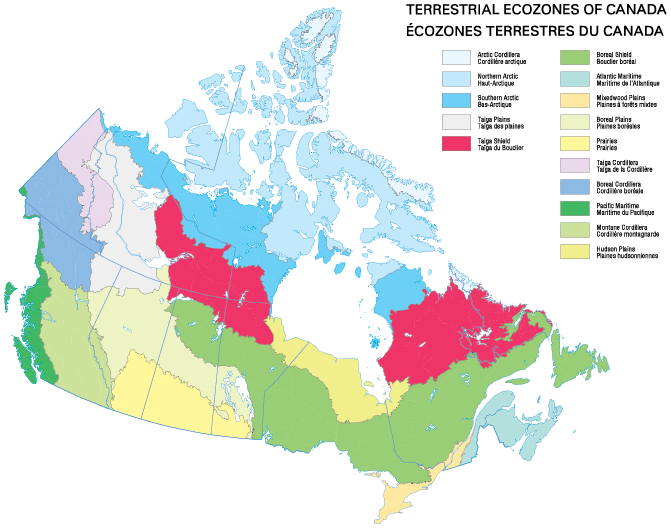The Russian term “taiga” refers to the northern edge of the boreal coniferous forest. Taiga ecozones circle the globe just south of the Arctic. The Canadian portion of the taiga—sometimes called “the land of little sticks”— stretches from Great Slave Lake to Labrador.
The National Ecological Framework for Canada classifies the area highlighted below in red as the Taiga Shield Ecozone:

Source: Government of Canada. (2023). Ecozones. National Ecological Framework for Canada. https://sis.agr.gc.ca/cansis/publications/maps/eco/all/zones/index.html
This ecozone is described as “an ecological crossroads where climates, soils, plants, birds, and mammals from two worlds—the Boreal and the Arctic— meet”

The Land of Little Sticks
Photo: Aaron Kylie
Image source: Kylie, A. (September 26, 2017). Exploring the eskers in the “Land of Little Sticks”. Canadian Geographic. https://canadiangeographic.ca/articles/exploring-the-eskers-in-the-land-of-little-sticks/
Trees in the Taiga Shield—some of which can be utilized for building—include black spruce, jack pine, green alder, paper birch, willow, tamarack, white spruce, balsam fir, trembling aspen, balsam poplar, white birch, and dwarf birch.
The Taiga Shield Shelter Project is designed for this ecozone, although many of its principles could be applicable to adjacent regions.
